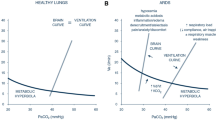Abstract
We investigated plausible changes in spectral and higher order statistical properties of tracheal respiratory sounds from wakefulness to sleep in relation to obstructive sleep apnea (OSA). Data consisted of expiratory sounds of 30 participants suspected of OSA during wakefulness and sleep, both recorded in supine position. Participants were divided into two groups of mild and severe OSA (15 in each group) based on their apnea/hypopnea index (AHI) per hour. Three different frequency-based features of their power spectra in addition to Kurtosis and Katz fractal dimension (KFD) were estimated from each normalized expiratory sound; they were compared within and between the groups. During wakefulness, the sounds average power at low-frequency components in severe group was lesser than that of the mild group. However, during sleep, the average power of high-frequency components in severe subjects was more than that of the mild group. The kurtosis value of both mild and severe OSA groups increased significantly from wakefulness to sleep using both mouth and nasal breathing sounds during wakefulness. The KFD increased significantly from wakefulness to sleep for both mild and severe OSA group using only nasal breathing sounds during wakefulness. These changes are indicative that the upper airway of severe OSA show more compliance and thickness compare to that of the mild OSA during both wakefulness and sleep and represent an increased stiffness during sleep. This implies a regional narrowing which cause both more compliance and stiffness simultaneously in different regions of the upper airway.




Similar content being viewed by others
References
Malhotra, A., & White, D. P. (2002). Obstructive sleep apnoea. Lancet, 360, 237–245. https://doi.org/10.1016/S0140-6736(02)09464-3.
Remmers, J. E., deGroot, W. J., Sauerland, E. K., & Anch, A. M. (1978). Pathogenesis of upper airway occlusion during sleep. Journal of Applied Physiology, 44, 931–938.
Young, T., Finn, L., Peppard, P. E., et al. (2008). Sleep disordered breathing and mortality: Eighteen-year follow-up of the Wisconsin sleep cohort. Sleep, 31, 1071–1078. https://doi.org/10.1016/S8756-3452(08)79181-3.
Punjabi, N. M. (2008). The epidemiology of adult obstructive sleep apnea. Proceedings of the American Thoracic Society, 5, 136–143. https://doi.org/10.1513/pats.200709-155MG.
Deacon, N., & Malhotra, A. (2016). Potential protective mechanism of arousal in obstructive sleep apnea. Journal of Thoracic Disease, 8, S545–S546. https://doi.org/10.21037/jtd.2016.07.43.
Finkelstein, Y., Wolf, L., Nachmani, A., et al. (2014). Velopharyngeal anatomy in patients with obstructive sleep apnea versus normal subjects. Journal of Oral and Maxillofacial Surgery, 72, 1350–1372. https://doi.org/10.1016/j.joms.2013.12.006.
Liu, K.-H., Chu, W. C. W., To, K.-W., et al. (2007). Sonographic measurement of lateral parapharyngeal wall thickness in patients with obstructive sleep apnea. Sleep, 30, 1503–1508.
Barkdull, G. C., Kohl, C. A., Patel, M., & Davidson, T. M. (2008). Computed tomography imaging of patients with obstructive sleep apnea. Laryngoscope, 118, 1486–1492. https://doi.org/10.1097/MLG.0b013e3181782706.
Dempsey, J. A., Veasey, S. C., Morgan, B. J., & O’Donnell, C. P. (2010). Pathophysiology of sleep apnea. Physiological Reviews, 90, 47–112. https://doi.org/10.1152/physrev.00043.
Younes, M. (2008). Role of respiratory control mechanisms in the pathogenesis of obstructive sleep disorders. Journal of Applied Physiology, 105, 1389–1405. https://doi.org/10.1152/japplphysiol.90408.2008.
Schwab, R. J., Pasirstein, M., Pierson, R., et al. (2003). Identification of upper airway anatomic risk factors for obstructive sleep apnea with volumetric magnetic resonance imaging. American Journal of Respiratory and Critical Care Medicine, 168, 522–530. https://doi.org/10.1164/rccm.200208-866OC.
Fogel, R. B., Trinder, J., White, D. P., et al. (2005). The effect of sleep onset on upper airway muscle activity in patients with sleep apnoea versus controls. Journal of Physiology, 564, 549–562. https://doi.org/10.1113/jphysiol.2005.083659.
Fredberg, J. J. (1974). Pseudo-sound generation at atherosclerotic constructions in arteries. Bulletin of Mathematical Biology, 36, 143–155.
Montazeri, A., Giannouli, E., & Moussavi, Z. (2012). Assessment of obstructive sleep apnea and its severity during wakefulness. Annals of Biomedical Engineering, 40, 916–924. https://doi.org/10.1007/s10439-011-0456-5.
Elwali, A., & Moussavi, Z. (2016). Obstructive sleep apnea screening and airway structure characterization during wakefulness using tracheal breathing sounds. Annals of Biomedical Engineering. https://doi.org/10.1007/s10439-016-1720-5.
Huq, S., & Moussavi, Z. (2012). Acoustic breath-phase detection using tracheal breath sounds. Medical and Biological Engineering and Computing, 50, 297–308. https://doi.org/10.1007/s11517-012-0869-9.
Yadollahi, A., & Moussavi, Z. M. K. (2007). Acoustical respiratory flow: A review of reliable methods for measuring air flow. IEEE Engineering in Medicine and Biology Magazine, 26, 56–61. https://doi.org/10.1109/MEMB.2007.289122.
Katz, M. J. (1988). Fractals and the analysis of waveforms. Computers in Biology and Medicine, 18, 145–156. https://doi.org/10.1016/0010-4825(88)90041-8.
Que, C., Kolmaga, C., Durand, L., et al. (2002). Phonospirometry for noninvasive measurement of ventilation: Methodology and preliminary results. Journal of Applied Physiology, 93, 1515–1526.
Walter, L. M., Dassanayake, D. U., Weichard, A. J., et al. (2017). Back to sleep- or not: The impact of the supine position in pediatric OSA. Sleep Medicine. https://doi.org/10.1016/j.sleep.2017.06.014.
Lan, Z., Itoi, A., Takashima, M., et al. (2006). Difference of pharyngeal morphology and mechanical property between OSAHS patients and normal subjects. Auris Nasus Larynx, 33, 433–439. https://doi.org/10.1016/j.anl.2006.03.009.
Moussavi, Z., Elwali, A., Soltanzadeh, R., et al. (2015). Breathing sounds characteristics correlate with structural changes of upper airway due to obstructive sleep apnea. In: Engineering in Medicine and Biology Society, pp. 5956–5959.
Bechwati, F., Avis, M. R., Bull, D. J., et al. (2012). Low frequency sound propagation in activated carbon. Journal of the Acoustical Society of America, 132, 239–248. https://doi.org/10.1121/1.4725761.
Jensen, O. E. (2002). Flows through deformable airways. Centre for Mathematical Medicine, School of Mathematical Sciences, University of Nottingham, Dynamical Systems in Physiology and Medicine. www.biomatematica.it/urbino2002/programmi/oejnotes.pdf.
Fregosi, R. F., & Fuller, D. D. (1997). Respiratory-related control of extrinsic tongue muscle activity. Respiration Physiology, 110, 295–306. https://doi.org/10.1016/S0034-5687(97)00095-9.
Savi, A., Nikoli, L., Budimir, S., Janoševi, D. (2012). Applications of Higuchi’ s fractal dimension in the analysis of biological signals. In: Telecommunications Forum (TELFOR), pp. 639–641.
Acknowledgement
This study has been supported by Natural Sciences and Engineering Research Council of Canada (NSERC).
Author information
Authors and Affiliations
Corresponding author
Rights and permissions
About this article
Cite this article
Hajipour, F., Moussavi, Z. Spectral and Higher Order Statistical Characteristics of Expiratory Tracheal Breathing Sounds During Wakefulness and Sleep in People with Different Levels of Obstructive Sleep Apnea. J. Med. Biol. Eng. 39, 244–250 (2019). https://doi.org/10.1007/s40846-018-0409-7
Received:
Accepted:
Published:
Issue Date:
DOI: https://doi.org/10.1007/s40846-018-0409-7




